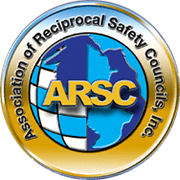By R. Ronald Sokol, CSP
President and CEO of Safety Council of Texas City
As safety professionals, we are dedicated to the protection of people, property and the environment. Our success is often measured in the amount of human suffering we prevent as we chart OSHA rates for recordable injuries, lost workday cases or cases of restricted work activity. We attempt to quantify our success as we compare past results against current performance. If the needle trends downward, we pat ourselves on the back, notify management and tout the success of our safety efforts. We become singular in focus as if the success or failure of our organization is predicated on this sole outcome. This type of thinking causes us to be pigeon-holed in our world, many times, outside of the heartbeat of the organization and its leadership. We are brought into the Board room to report on a certain situation and promptly escorted out once our information and expertise are no longer needed. It is a sad reality that this is how a large majority of safety professionals operate. If this is how you operate, the question becomes, why should I change and, if I do, how do I change?
To address the question of "why" should I change, I challenge you to view safety through a performance-based looking glass. As safety professionals, much of our time is spent on research of standards and creating policies and procedures to ensure compliance with applicable governmental standards. This methodology breeds a compliance or prescriptive based approach that restricts our influence throughout an organization. Our sphere of influence becomes limited to rules and regulations and not strategies that can drive organizational change and improve financial performance. This methodology keeps us on the outside looking in. The "why" question can be summed up with the answer that as safety professionals, we want to have the greatest sphere of influence possible so we can be seen as agents for organizational change that deliver superior performance to meet goals and objectives.
Safety should not be viewed as an "add in" or even a "priority," because priorities change based upon inputs and conditions. The same can be said about statements such as "Safety is our number 1 goal," since goals change as well. Most in our profession will agree with the premise that safety must be a value and remain a constant regardless of the inputs and conditions. How can we be successful in creating the culture and mindset needed to drive this value statement?
Let me offer a few suggestions. First, industrial hygiene and safety professionals must work to gain a greater understanding of the business aspects of their organization and how their role impacts the bottom line. It begins with seeking knowledge about income statements, balance sheets and accounting principles and practices that are the common language of business executives. Second, industrial hygiene and safety professionals need to work at developing cross-functional skills outside of their current discipline to provide maximum value to the organization. Areas such as environmental compliance, subcontract engineering, health services, security and risk management all have related responsibilities into the safety and health discipline. Third, industrial hygiene and safety professionals must think like a consultant hired by the organization to bring value to the bottom line. Good consultants have become masters in showing value and worth to the organization and must justify the dollars allotted to them. This is achieved by meeting pre-determined goals and performance objectives that are measurable and tied to the organization's mission and vision. It requires crafting a strategy and plan based upon risk and executing the necessary steps to bring positive change to the organization. It is the aptitude to chart performance against established objectives versus accepting the status quo and trying to deal with it. It can be achieved when we "view safety through a performance-based looking glass."
